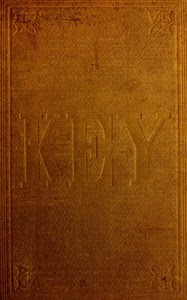A KEY
TO
UNCLE TOM’S CABIN;
PRESENTING THE ORIGINAL
FACTS AND DOCUMENTS
UPON WHICH THE STORY IS FOUNDED.
TOGETHER WITH
Corroborative Statements
VERIFYING
THE TRUTH OF THE WORK.
Uncle Tom's Cabin by Harriet Beecher Stowe (eText)
The PDF might take a minute to load. Or, click to download PDF.
If your Web browser is not configured to display PDF files. No worries, just click here to download the PDF file.
About the Author
Harriet Elisabeth Beecher Stowe (/stoʊ/; June 14, 1811 – July 1, 1896) was an American author and abolitionist. She came from the religious Beecher family and became best known for her novel Uncle Tom's Cabin (1852), which depicts the harsh conditions experienced by enslaved African Americans. The book reached an audience of millions as a novel and play, and became influential in the United States and in Great Britain, energizing anti-slavery forces in the American North, while provoking widespread anger in the South. Stowe wrote 30 books, including novels, three travel memoirs, and collections of articles and letters. She was influential both for her writings as well as for her public stances and debates on social issues of the day. Wikipedia
Harriet Beecher Stowe at Amazon




No comments:
Post a Comment